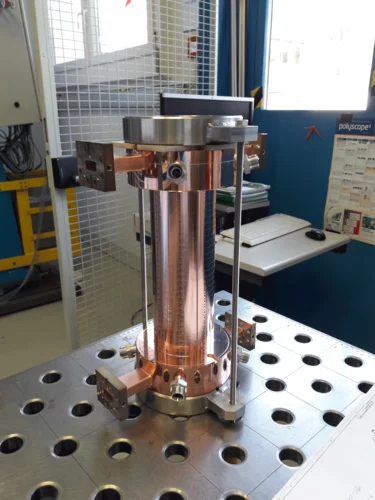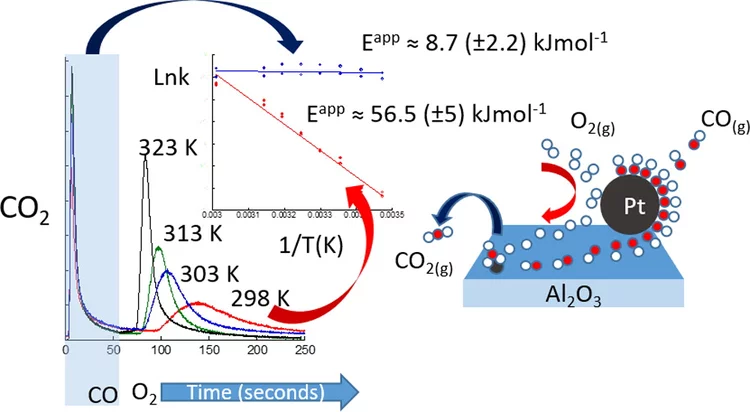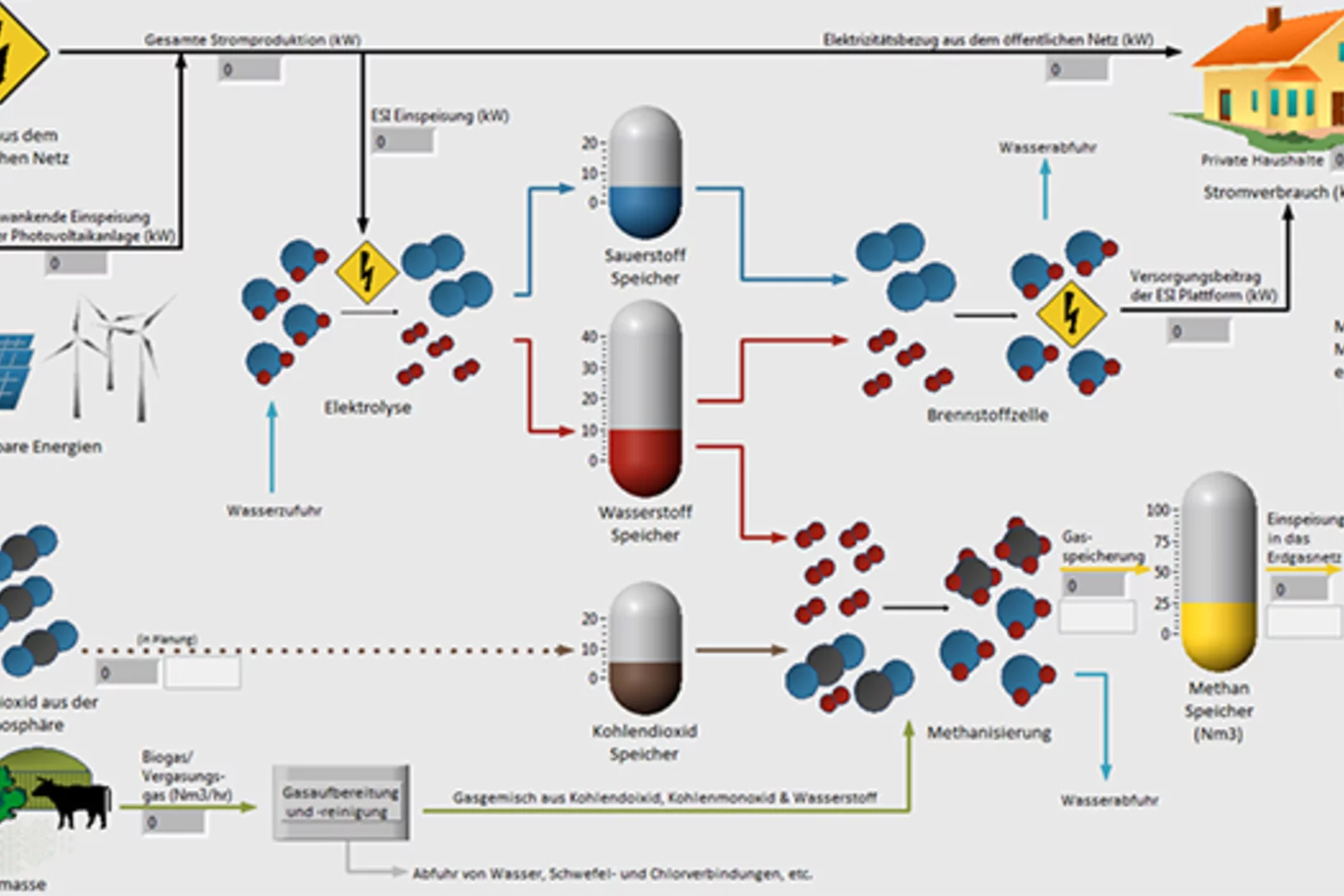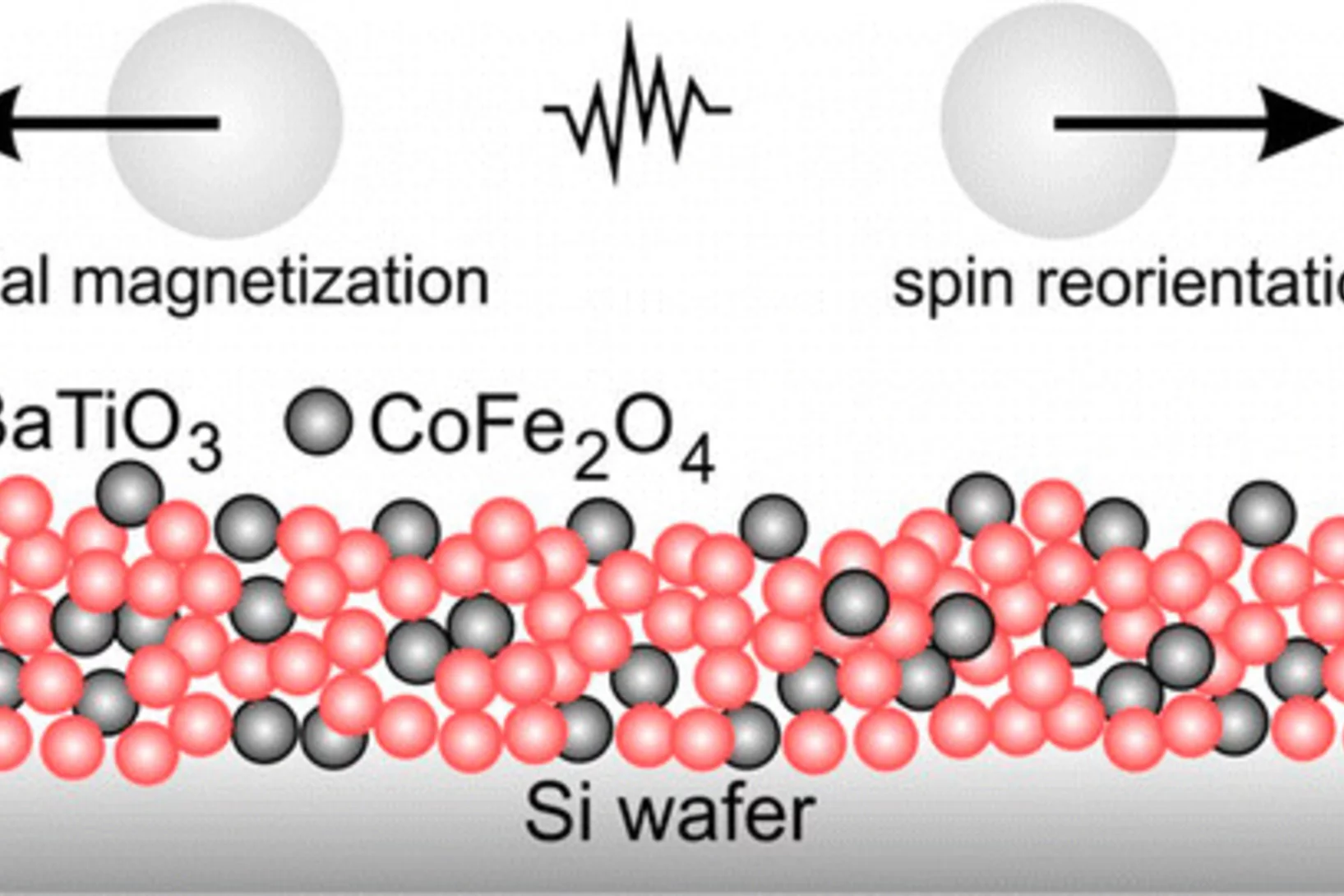Am PSI widmen sich mehrere Projekte wichtigen Forschungsfragen rund um das Coronavirus Sars-CoV-2 und den daraus resultierenden Erkrankungen. Wir informieren über Aktivitäten und Vorhaben, zum Beispiel zu Untersuchungen von Lungengewebe, zur Produktion von Proteinen und Antikörpern oder über Ideen für neue Forschung zu Covid-19.
Nützliche Links
X-band prototype structure
Radio-frequency structures at X-band frequencies (~ 12 GHZ) are being considered for applications in compact Free Electron Lasers, medical linacs, a future linear collider (CLIC project) and as a diagnostic for measuring ultra-short (femtosecond) electron pulses in FELs. A first prototype of such a structure has been built at PSI employing the realization procedures that have been developed for the C-Band (6 GHz) structures of the SwissFEL linac.
New TOMCAT paper: The GigaFRoST camera and readout system
The PSI in-house developed GigaFRoST high-speed camera and readout system is available for fast imaging experiments at the TOMCAT beamline, opening up exciting new possibilities for the observation of fast dynamic phenomena with X-ray tomography.
Breaking Through the False Coincidence Barrier in Electron–Ion Coincidence Experiments
The false coincidence background has so far limited the analytical application of PEPICO, photoelectron photoion coincidence. A new photoioin rastering technique has been developed to separate the wheat from the chaff and identify true coincidences based on the ion hit time and position. This expands the dynamic range of the experiment by at least two orders of magnitude, allowing for novel applications to look for reactive intermediates and short lived species in reaction environments.
Structure and Conductivity of Epitaxial Thin Films of In-Doped BaZrO3‑Based Proton Conductors
Epitaxial thin films of the proton-conducting perovskite BaZr0.53In0.47O3−δH0.47−2δ, grown by pulsed laser deposition, were investigated in their hydrated and dehydrated conditions through a multitechnique approach with the aim to study the structure and proton concentration depth profile and their relationship to proton conductivity.
EUCALL finishes first year, bearing new technologies
The European Cluster of Advanced Laser Light sources (EUCALL), a European Union-funded project that aims to foster links between accelerator- and laser-driven X-ray facilities, has completed the first year of its three year project period. The project successfully met all twenty of its milestones for the year, producing a new open-source tool for experiment simulations and developing specifications for several pieces of new scientific equipment.
The 1st LUC Retreat
The LUC team held inspiring discussions about LUC's current and future research in the relaxing atmosphere of Hotel Möschberg near Bern.
Die Stoffe, die Wolken heller machen
Wolken bestehen aus winzigen Tröpfchen. Diese Tröpfchen bilden sich, wenn das Wasser an sogenannten Aerosolen kondensiert – an kleinen Partikeln in der Atmosphäre. Um besser zu verstehen, wie wiederum Aerosole entstehen, haben Forschende nun eine umfassende Computersimulation auf der Grundlage detaillierter experimenteller Daten erstellt. Diese Simulation zeigt, dass neben Schwefelsäure noch zwei weitere Substanzen entscheidend an der Bildung von Aerosolen beteiligt sind: organische Verbindungen und Ammoniak. Die Forschungsergebnisse wurden nun im renommierten Fachblatt Science veröffentlicht.
100 Hz neutron radiography at the BOA beamline using a parabolic focussing guide
The recent developments in scientific complementary metal oxide semiconductor (sCMOS) detector technology allow for imaging of relevant processes with very high temporal resolution with practically negligible readout time. However, it is neutron intensity that limits the high temporal resolution neutron imaging. In order to partially overcome the neutron intensity problem for the high temporal resolution imaging, a parabolic neutron focussing guide was utilized in the test arrangement and placed upstream the detector in such a manner that the focal point of the guide was positioned slightly behind the scintillator screen. In such a test arrangement, the neutron flux can be increased locally by about one order of magnitude, albeit with the reduced spatial resolution due to the increased divergence of the neutron beam. In a pilot test application, an in-situ titration system allowing for a remote delivery of well-defined volumes of liquids onto the sample stage was utilized. The process of droplets of water (H2O) falling into the container filled with heavy water (D2O) and the subsequent process of the interaction and mixing of the two liquids were imaged with temporal resolution of 0.01 s.
Progress in High-resolution Neutron Imaging at the Paul Scherrer Institut – The Neutron Microscope Project
The recent improvement on the capability of neutron imaging that allows acquiring neutron images with isotropic spatial resolution of about 5 micrometres is demonstrated. This is achieve by combining the tailor-made high-numerical aperture magnifying optics together with a thin isotopically-enriched 157Gd2O2S:Tb scintillator screens (see Trtik & Lehmann, NIM-A 788 (2015) 67-70). The newly achieved level of the spatial resolution represents about 30% enhancement compared to the first prototype (see Trtik et al, Physics Procedia 69 (2015) 169-176) and approximately six-fold enhancement in the spatial resolution capabilities available for the general users community at PSI before the start of the Neutron Microscope project.
Im chemischen Mikroskop
Der Forscher Daniel Grolimund ist für eine Strahllinie an der Synchrotron Lichtquelle Schweiz SLS des PSI verantwortlich, an der sich die Verteilung chemischer Verbindungen in verschiedenen Objekten bestimmen lässt. Von diesen Möglichkeiten profitieren Forschende verschiedenster Disziplinen: Batterieforscherinnen genauso wie Biologen, Archäologen und viele andere mehr. Im Interview berichtet er von den vielfältigen Themen, die an der Strahllinie untersucht werden, und den Herausforderungen, die diese Vielfalt mit sich bringt.
First protein structure solved using the JUNGFRAU detector
JUNGFRAU is a charge-integrating, two-dimensional pixel detector developed at the Paul Scherrer Institut for use at free-electron lasers, in particular SwissFEL, and synchrotron light sources. On the 10th October, the first protein crystallography experiment using the JUNGFRAU detector, was performed at the beamline X06SA (PXI) of the Swiss Light Source by the members of the Protein Crystallography and Detectors groups at PSI.
C–H Activation on Co,O Sites: Isolated Surface Sites versus Molecular Analogs
The activation and conversion of hydrocarbons is one of the most important challenges in chemistry. This work shows that isolated Co(II) sites are catalysts for a number of hydrocarbon conversion reactions, such as the dehydrogenation of propane, the hydrogenation of propene, and the trimerization of terminal alkynes. The data are consistent with all of these reactions occurring by a common mechanism, involving heterolytic C–H or H–H activation via a 1,2 addition across a Co–O bond.
First protein structure solved using the JUNGFRAU detector!
JUNGFRAU is a charge-integrating, two-dimensional pixel detector developed at the Paul Scherrer Institut for use at free-electron lasers, in particular SwissFEL, and synchrotron light sources. On the 10th October, the first protein crystallography experiment using the JUNGFRAU detector, was performed at the beamline X06SA (PXI) of the Swiss Light Source by the members of the Protein Crystallography and Detectors groups at PSI.
Novel insulating phase in iron-pnictide materials
The first example of an insulating phase which is close to the superconducting phase in an iron-pnictide system has been recently observed in heavy Cu-doped NaFe1-xCuxAs (x > 0.3). A combined study by angle-resolved photoemission spectroscopy (ARPES) and density functional theory (DFT) calculations revealed that on-site Coulomb repulsion and enhanced Hund’s rule coupling are responsible for the insulating behavior. The results show that the insulating phase in NaFe0.5Cu0.5As resembles the situation in the parent compounds of the high-Tc cuprate superconductors.
Radioactive targets produced at PSI enable improving the Big Bang Theory
One of the long-lasting unsolved problems in Nuclear Astrophysics is the so-called "Cosmological Li Problem", i.e. the large discrepancy between the primordial 7Li abundance predicted by models of Big Bang Nucleosynthesis and the one inferred from astronomical observation. The study of the production/destruction rates of the radioactive precursor 7Be is one of the clues for solving this problem.
Welcome Susanne Haselbeck
We warmly welcome Susanne Haselbeck in the Laboratory of Environmental Chemistry joining the Analytical Chemistry group as of 18th October 2016. Susanne Haselbeck is a chemical lab technician by training and will contribute to our Paleofire project by analysing black carbon in samples from various ice cores using a single particle soot photometer.
Technology award for microneedle-optofluidic sensor system
Sahan Ranamukhaarachchi, PhD student from UBC in Vancouver, won the 2016 "Brian L. Barge Award for Excellence in Microsystems Integration" for his work on a biosensing platform with integrated hollow microneedles carried out at PSI in 2015 in collaboration with Dr. Victor Cadarso and Dr. Celestino Padeste.
Kinetic studies of the Pt carbonate-mediated, room-temperature oxidation of carbon monoxide by oxygen
The kinetics involved in ambient-temperature catalytic oxidation of carbon monoxide by oxygen over a Pt/Al2O3 catalyst is evaluated under periodic redox operation using combined mass spectrometry, diffuse reflectance infrared spectroscopy and time-resolved Pt L3-edge X-ray absorption spectroscopy.
Effect of disorder on a pressure-induced z = 1 magnetic quantum phase transition
Pressure-induced ordering close to a z = 1 quantum-critical point is studied in the presence of bond disorder in the quantum spin system (C4H12N2)Cu2(Cl1−xBrx)6 (PHCX) by means of muon-spin rotation and relaxation.
24 Stunden auf der ESI-Plattform (Video)
Wie kann man überschüssigen Strom, der nicht ins Stromnetz eingespeist werden kann, nutzbar machen? Ein fiktiver Wintertag auf der Energy-System-Integration-Plattform am Paul Scherrer Institut PSI.
Labile peroxides in secondary organic aerosol
Aerosols, suspended fine liquid or solid particles in the air we breathe, play a central role in many environmental processes through their influence on climate, the hydrological cycle, and their adverse effects on human health. While the mechanisms by which aerosol particles affect our health remain uncertain, the atmospheric oxidation of organic vapors has been shown to be related to the formation of oxygenated organic matter with high oxidative potential, the so-called reactive oxygen species (ROS).
Wahlweise elektrisch leitend oder isolierend
Das Material Neodym-Nickel-Oxid ist je nach seiner Temperatur entweder ein Metall oder ein Isolator. Die Möglichkeit, diesen Übergang elektrisch zu steuern, macht das Material zu einem möglichen Kandidaten für Transistoren in modernen elektronischen Geräten. Mittels einer ausgeklügelten Weiterentwicklung der Röntgenstreuung konnten Forschende am Paul Scherrer Institut PSI nun die Ursache dieses Übergangs nachvollziehen: Rund um die Sauerstoffatome sortieren sich die Elektronen um.
Flüssigsalzreaktoren – die Erforschung einer Möglichkeit
Am Paul Scherrer Institut PSI erforscht eine kleine Gruppe von Wissenschaftlern mittels theoretischen Modellen mögliche zukünftige Kernreaktoren: die sogenannten Flüssigsalzreaktoren. Dies hilft, die Expertise der Schweiz bei heutigen und zukünftigen globalen Fragestellungen im Bereich Kernenergie und Reaktorsicherheit zu sichern.
Completion of the vacuum pipes assembly from injector to front end
On Monday October the 10th the last piece of the vacuum tube was mounted and pumped down. The about 500 m long vacuum chamber from the end of the injector to the photonics front end is now under vacuum. The only missing junction at z=119m between the already operated injector and the rest of SwissFEL will be mounted shortly before the delivery of the operation permit.
Last undulator placed in SwissFEL tunnel
On the 6th of October the last undulator for the ARAMIS beamline was placed into the SwissFEL tunnel. Thanks to the efficiency and motivation of the different groups involved with undulator preparation, all 12 undulators were assembled, measured and installed in the tunnel between the 2nd of February 2016 and the 6th of October 2016.
An den PSI-Grossforschungsanlagen denken Physiker die Nobelpreis-Theorien weiter
Der diesjährige Nobelpreis für Physik geht an David Thouless, Duncan Haldane und Michael Kosterlitz. Die Akademie zitiert in ihrem Hintergrundbericht auch Experimente, die Michel Kenzelmann, heute Laborleiter am PSI, durchgeführt hat. Er und weitere Forschende am PSI experimentieren weiterhin noch auf der Grundlage der Theorien, die jetzt mit dem Nobelpreis ausgezeichnet wurden.
Nanoparticle-Based Magnetoelectric BaTiO3–CoFe2O4 Thin Film Heterostructures for Voltage Control of Magnetism
Multiferroic composite materials combining ferroelectric and ferromagnetic order at room temperature have great potential for emerging applications such as four-state memories, magnetoelectric sensors, and microwave devices.
Kinetic studies of the Pt carbonate-mediated, room-temperature oxidation of carbon monoxide by oxygen over Pt/Al2O3 using combined, time-resolved XAFS, DRIFTS, and mass spectrometry
The kinetics involved in novel ambient-temperature mechanism for the catalytic oxidation of carbon monoxide by oxygen over a Pt/Al2O3 catalyst is evaluated within a periodic redox operation paradigm using combined mass spectrometry (MS), diffuse reflectance infrared spectroscopy (DRIFTS), and time-resolved Pt L3-edge XAFS. A high-wavenumber (ca. 1690 cm-1) carbonate species are shown to be associated with a room-temperature redox process occurring in a fraction of the Pt atoms present in the catalyst.
Magnetodielectric detection of magnetic quadrupole order in Ba(TiO)Cu4(PO4)4 with Cu4O12 square cupolas
In vortex-like spin arrangements, multiple spins can combine into emergent multipole moments. Such multipole moments have broken space-inversion and time-reversal symmetries, and can therefore exhibit linear magnetoelectric (ME) activity. Three types of such multipole moments are known: toroidal; monopole; and quadrupole moments. So far, however, the ME activity of these multipole moments has only been established experimentally for the toroidal moment.
2,6 Millionen EU-Mittel für die Erforschung von grundlegenden Wechselwirkungen in Magneten
Christian Rüegg erhält die angesehene europäische Förderung ERC Consolidator Grant. Mit dem Geld will er weiter erforschen, wie die kleinsten magnetischen Bausteine der Materie wechselwirken.





























